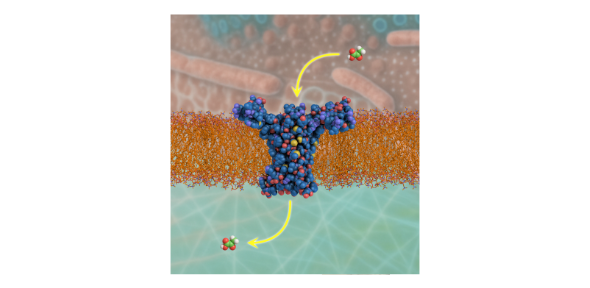
Submitted by Penny Peck on Fri, 18/04/2025 - 19:00
Fifty years since its discovery, scientists in the laboratory of Professor Edmund Kunji have finally worked out how a molecular machine found in mitochondria allows us to make the fuel we need from sugars, a process vital to all life on Earth.
In collaboration with the groups of Professors Vanessa Leone at the Medical College of Wisconsin, Lucy Forrest at the National Institutes of Health, and Jan Steyaert at the Free University of Brussels, scientists in the Kunji group have worked out the structure of this machine and shown how it operates like the lock on a canal to transport pyruvate – a molecule generated in the body from the breakdown of sugars – into our mitochondria.
Because of its central role in controlling the way mitochondria operate to produce energy, this carrier is now recognised as a promising drug target for a range of conditions, including diabetes, fatty liver disease, Parkinson’s disease, specific cancers, and even hair loss
Known as the mitochondrial pyruvate carrier, this molecular machine was first proposed to exist in 1971, but it has taken until now for scientists to visualise its structure at the atomic scale using cryo-electron microscopy, a technique used to magnify an image of an object to around 165,000 times its real size. Details are published today in Science Advances.
Further information is available via the University of Cambridge press release.
Publication reference:
Sichrovsky, M, Lacabanne, D, Ruprecht, JJ & Rana, JJ et al. Molecular basis of pyruvate transport and inhibition of the human mitochondrial pyruvate carrier. Sci Adv; 18 Apr 2025; DOI: 10.1126/sciadv.adw1489

